http://blog.multipath-tcp.org/blog/html/2018/12/15/apple_and_multipath_tcp.html
Apple uses Multipath TCP
The initial specification for Multipath TCP was published in January 2013 RFC 6824. Apple had participated to some of the discussions during the IETF meetings before, but never announced a deployment. Shortly after the publication of RFC 6824, Phil Eardley published a blank internet draft, draft-eardley-mptcp-implementations-survey-01 that explicitly asked questions to implementers.
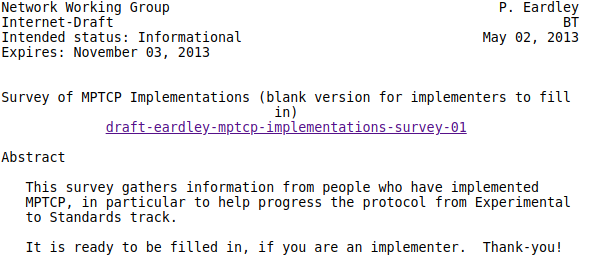
Four implementations were disclosed during the summer of 2013:
- on implementation on Citrix load balancers discussed on page 31
Five years after, it is interesting to look at the characteristics of this anonymous implementation.
- This implementation only supports client-initiated subflows
- It uses 4 bytes DSN as a default, but can support 8 bytes DSN
- The support for ADD_ADDR and REMOVE_ADDR was described as : It does not support sending ADD_ADDR or processing ADD_ADDR as it is considered a security risk. Also, we only have a client side implementation at the moment which always initiates the sub flows. The remote end does not send ADD_ADDR in our configuration. The client can send REMOVE_ADDR however when one of the established sub flow’s source address goes away. The client ignores incoming REMOVE_ADDR options also.
- It does not implement the coupled congestion control defined in RFC 6356
- It uses a private API and not the socket API proposed in RFC 6897
- The proposed deployment is described as follows : MPTCP in mobile environments is very powerful when used in the active/backup mode. Since the network interfaces available on mobile devices have different cost characteristics as well as different bring up and power usage characteristics, it is not useful to share load across all available network interfaces - at least not currently. Providing session continuity across changing network environments is the key deployment scenario.
In September 2013, Apple launched iOS7 that included support for Multipath TCP. Apple’s motivation for using Multipath TCP on iOS have been explained in details in [BS16]:
Siri is the digital assistant in Apple’s iOS and macOS operating systems. Because speech recognition requires tremendous processing power, Siri streams spoken commands to Apple’s datacenter for speech recognition; the result is sent back to the smartphone. Although the duration of a user’s interaction with Siri is relatively short, Siri’s usage pattern made this data transfer a perfect client for MPTCP.
Many people use Siri while walking or driving. As they move farther away from a WiFi access point, the TCP connection used by Siri to stream its voice eventually fails, resulting in error messages.
To address this issue, Apple has been using MPTCP—and benefiting from its handover capabilities—since its iOS 7 release. When a user issues a Siri voice command, iOS establishes an MPTCP connection over WiFi and cellular. If the phone loses connectivity to the WiFi access point, traffic is handed over to the cellular interface. A WiFi connection that is still in sight of an access point can have a channel become so lossy that barely any segments can be transmitted. In this case, another retransmission timeout happens and iOS retransmits the traffic over the cellular link.
The article continues with additional information that describes how Apple has tuned Multipath TCP to this specific use case. A description of the Multipath TCP handshake used by Siri has been published in a previous blog post.
While Multipath TCP was part of iOS, it was only used by Apple’s own Siri applications. The regular applications could not leverage the benefits of Multipath TCP. This changed in 2017 with the launch of iOS11. During WDC2017, Christoph Paasch and his colleagues announced that any application would be able to use Multipath TCP on iOS11.
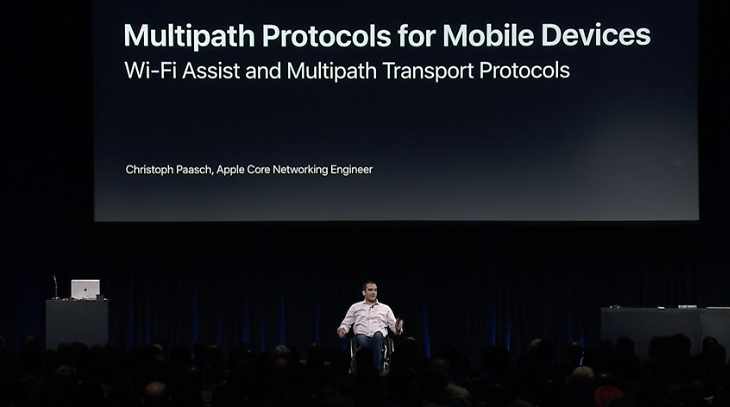
A detailed summary of these announcements appear on the tessares blog. iOS11 supports two modes of operation : Handover and Interactive.
Connection starts over the WiFi link and no packet is sent over the cellular interface. If the signal gets worse, a new TCP subflow will be created on the cellular interface automatically. The cellular subflow will be removed once the user is back in a WiFi network.
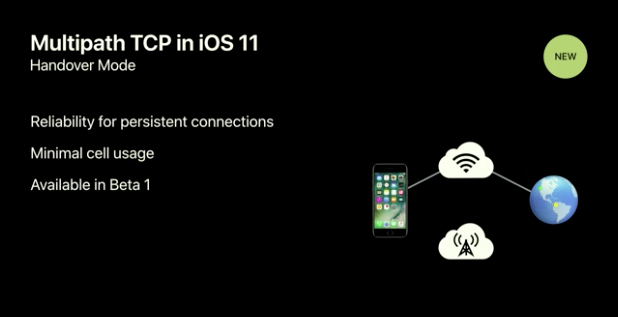
The interactive mode establishes both WiFi and cellular subflows for each Multipath TCP connection, even if the WiFi network appears to be working well. The objective of this mode is to reduce latency. The Multipath TCP scheduler will select the flow that provides the lowest latency.
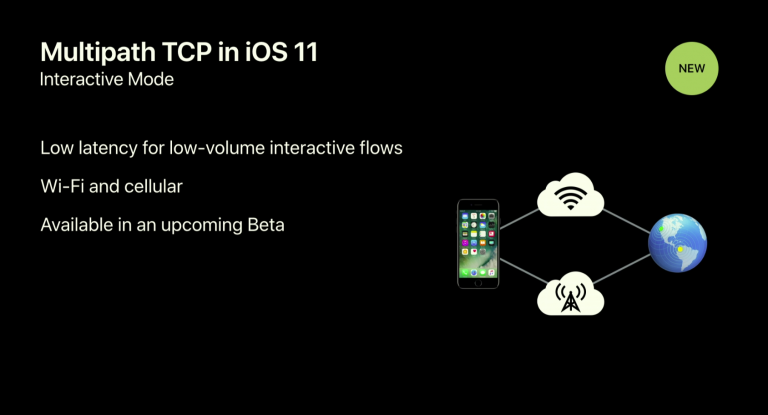
Since the publication of iOS11, some applications have started to use Multipath TCP. One of them is the Multipath Tester, an application written by Quentin De Coninck that allows to compare the performance of Multipath TCP and Multipath QUIC on iOS11 [CB18]. You can download it from https://itunes.apple.com/us/app/multipathtester/id1351286809
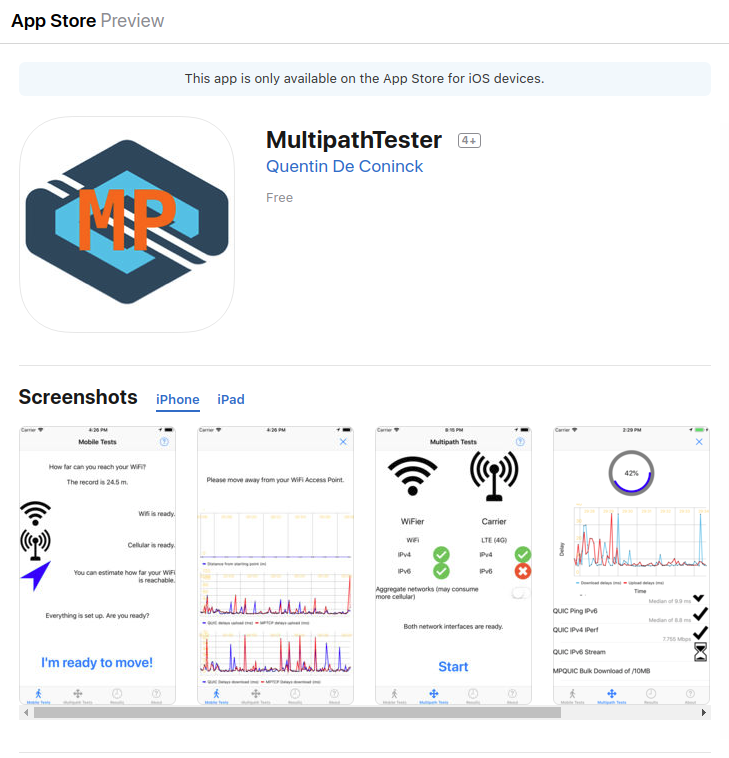
References
| [BS16] | Olivier Bonaventure and SungHoon Seo. Multipath tcp deployments. IETF Journal, 12(2):24–27, 2016. URL: https://www.ietfjournal.org/multipath-tcp-deployments/. |
| [CB18] | Quentin De Coninck and Olivier Bonaventure. Observing network handovers with multipath TCP. In Proceedings of the ACM SIGCOMM 2018 Conference on Posters and Demos, SIGCOMM 2018, Budapest, Hungary, August 20-25, 2018, 54–56. 2018. URL: https://multipath-quic.org/multipathtester/2018/08/28/sigcomm-poster.html, doi:10.1145/3234200.3234214. |